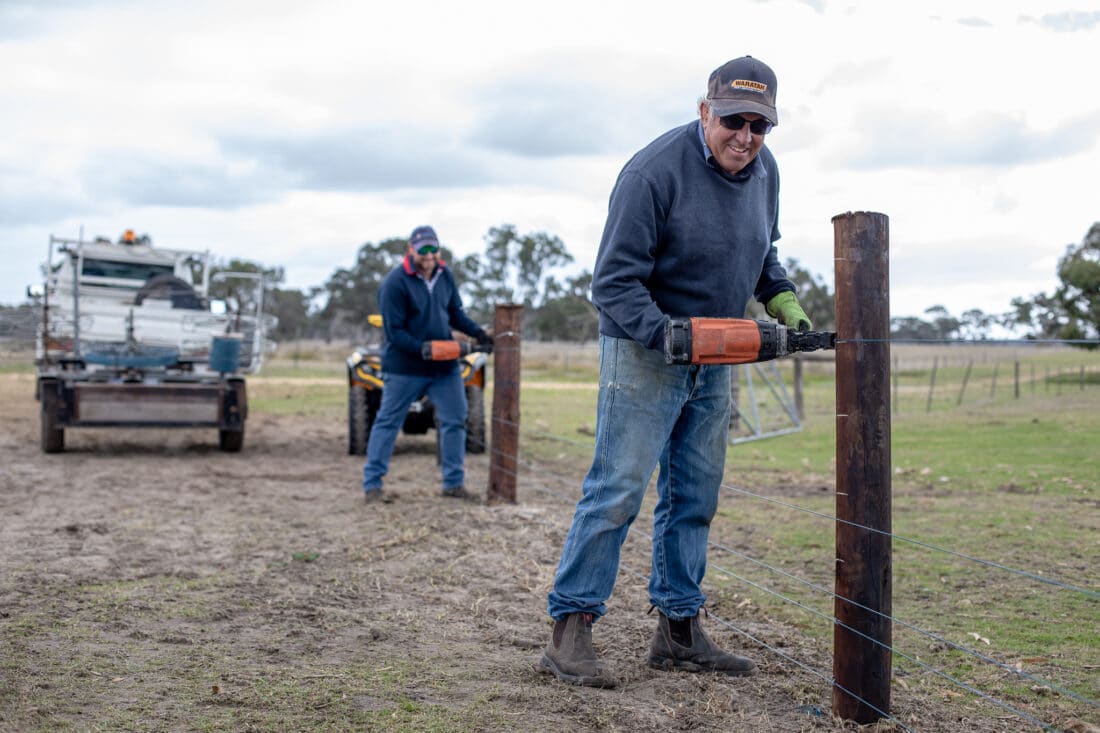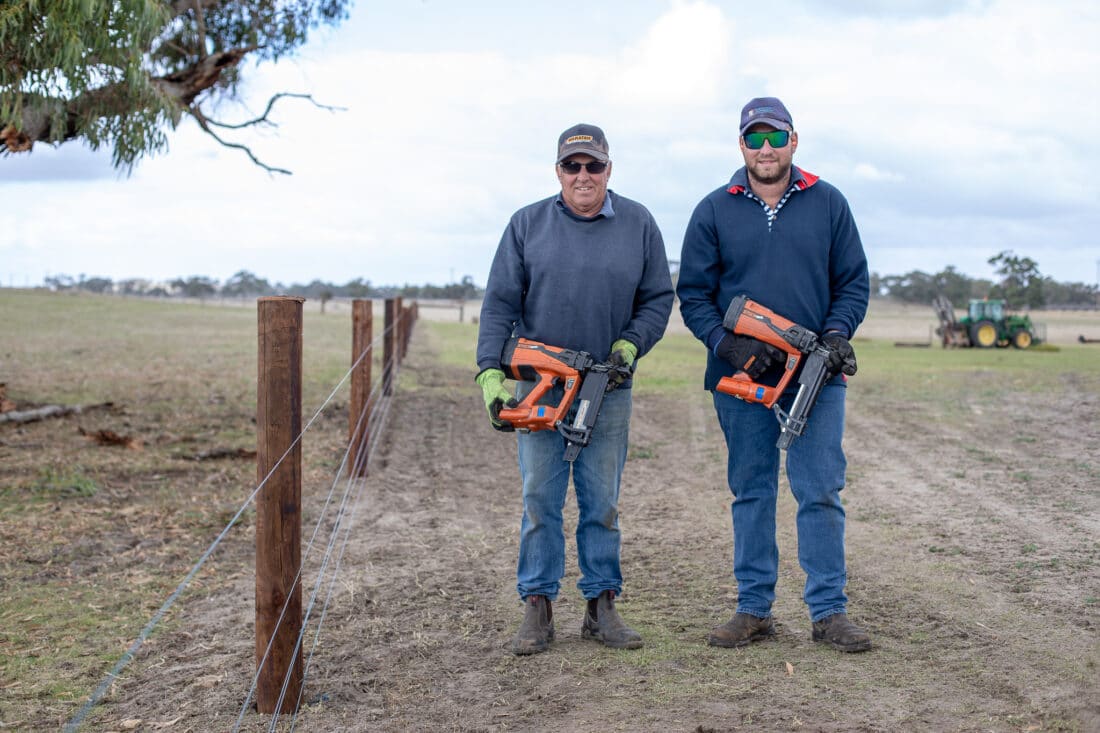Greg Tapscott started Tapscott Rural Fencing in Lower Light South Australia 19 years ago. Every year, along with his two staff, Greg makes a base 450kms away from home in the South East, to service repeat clients and recently to rebuild fences after bushfire season.
What has been the biggest challenge in your fencing career?
Flood and fire fences are the toughest. Some of the fire fencing is pretty devastating– because you are dealing with people who have lost everything and you can see what kind of grief they are going through. Up in the Adelaide Hills, after the Kersbrook fires, we spent about six months up there, only getting through about 300 metres a day. It is hard going on everyone and especially hard on your body.
What makes a great fencer?
You have to be resilient to endure the repetitive hard labour outside and all year round. It’s hard work and not for the faint-hearted. For me, I like that you are doing different fences, moving around the countryside. I never seem to get sick of it because I love meeting new people.
What’s your favourite tool?
There’s not one specifically that’s a favourite. You need to have a lot of different tools for this industry, but overall you have to have good quality tools. With a hammer and a shifting spanner you can fix nearly anything but some of the mechanized tools make life a lot easier.
What is one piece of advice for newcomers?
Do it properly. Keep your strainers tight, assembly work, and wire work neat and tidy. If you don’t, in 12 months time it’s probably going to fall down. We have never been out of business because we do it properly the first time and we have great pride in our work. You can’t shortcut, you can’t go half hearted.
Most rewarding?
To look back at the end of the day and see what you have done. And to know that you have built a good strong fence that will last for years to come.
What’s next?
We still have plenty of fencing booked up here and at home. We will have a few weeks off in June but most of the time we are just full on and flat out fencing.



